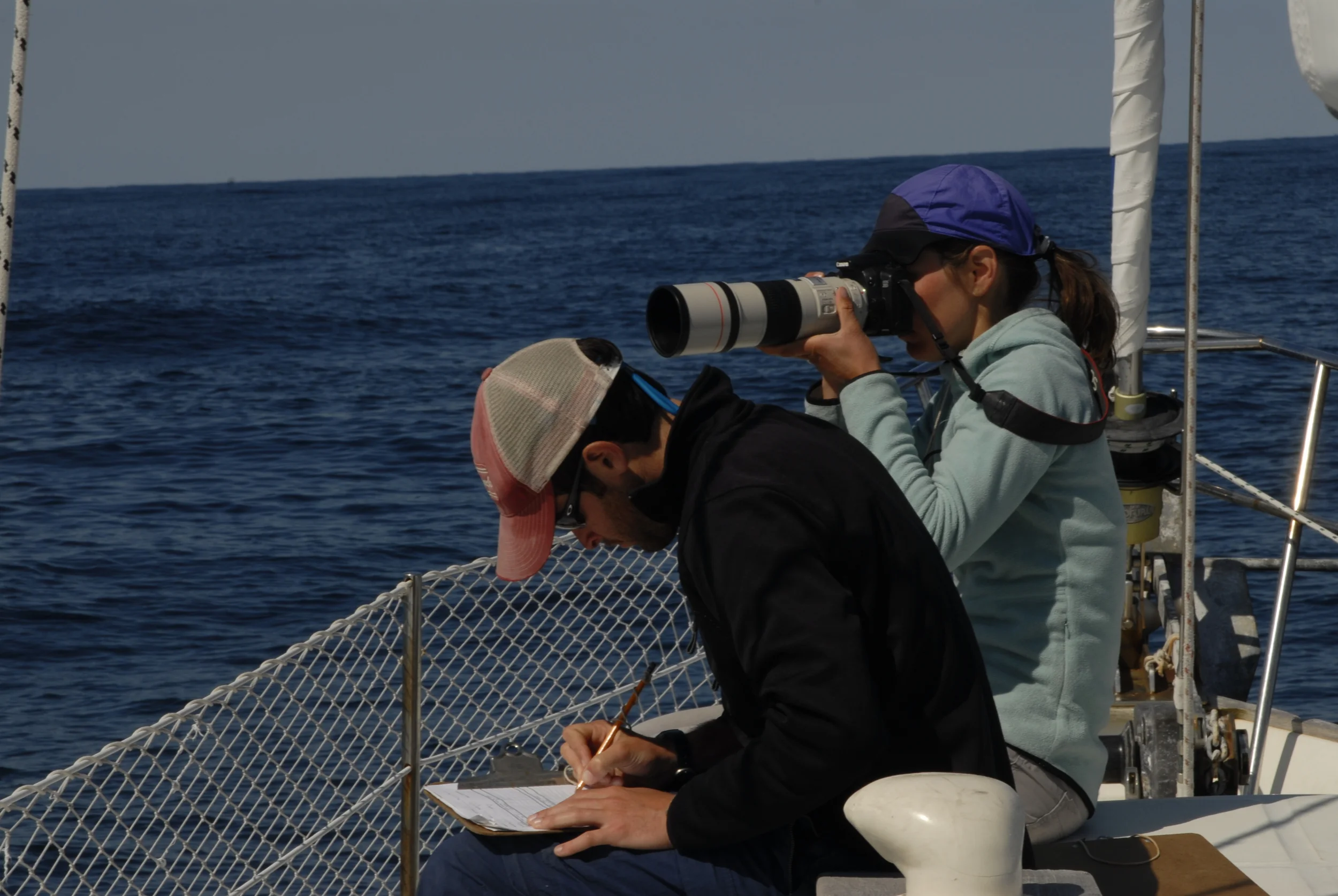



Research Overview
Research Overview
Research Overview
Research Overview
To learn from the sperm whales of the Caribbean as to better help conserve and protect the populations and cultural diversity of cetaceans worldwide.
Our research program integrates both a long-term observational approach and innovative technology to address key questions about this marine apex predator. While the project's main objectives focus on social behaviour and vocal communication, our integrative program incorporates biological sampling for genetic, diet, and blubber analysis; as well as passive acoustic monitoring and photographic assessment of cetacean populations for local governments.

Ongoing Research
Ongoing Research
Ongoing Research
Ongoing Research
Social Recognition and Culture
How groups of whales recognize each other and make social and movement decisions on a biological relevant scale remains completely unknown. Our studies seeks to understand how the sperm whale, a nomadic marine apex predator, mediates its social interactions, over what distances units make these social and group movement decisions; and how sympatric cultural clans interact across submesoscales.
Coda Communication
If coda types have differing functions, one would expect to find differing patterns to their usage across behavioural and social contexts, in their ordering during vocal exchanges, and based on the identity of the the signaler and receiver. Using multiple animal-borne tags deployed on well-known individuals, as well as our large dataset of recordings since 2005, along with multiple collaborators in Project CETI, from MIT CSAIL, UC Berkeley, and University of Haifa, to address questions about the variability of codas across additional parameters than just rhythm and tempo, the higher level structure of coda exchanges, the long-range syntax of codas within vocal exchanges, how coda exchanges vary across social and behavioural contexts, and about vocal asymmetries in who speaks and when.
We address these questions using novel methods based in signal processing, and now also using modern neural network approaches.
Drone video Behavioural Observations
In collaboration with our partners at MIT CSAIL in Project CETI, we are working on methods to study sperm whale behaviour based on drone video. Using computer vision to detect and track individuals, we can answer questions about fine scale social and vocal interactions not previously possible from a boat-based vantage point.
Kinship
Sperm whale units are generally matrilineal, which suggests kin-selection may contribute to the formation and maintenance of their long-term social units. However, the long-term social datasets matched with comprehensive genetic sampling are rare among marine mammals. By pairing our detailed social history of the individuals we study and skin sampling from across the last two decades, our team has a unique opportunity to examine kin-selection’s role in sperm whale societies and to ultimately better understand the selective pressures driving sperm whales’ multi-levelled social structure.
Interaction between Whales and Ship Traffic
Ship traffic around the world has been increasing by 3% per year and this has contributed to an increase in lethal collisions with whales worldwide. This risk is particularly acute around island chains, such as the Caribbean, which import the vast majority of their goods and have high levels of ship traffic between islands. By using the DSWP's long-term sperm whale sightings database in conjunction with AIS vessel position data, we can evaluate the degree of interaction between whales, ship traffic, and fish-aggregating devices off Dominica. This has facilitated the creation of national shipping lanes, and will be particularly important prior to the expansion of the Panama Canal and increases in regional shipping intensity.
Foraging Ecology
Sperm whale mothers make deep foraging dives during which our ability to study their behaviour is limited. Using animal-borne tags deployed synchronously on well-known whales in the same unit, we are able to answer questions about foraging strategies, differences in prey capture among units and clans, link vocal beahviour to foraging success, how calves synchronize with their mothers, and the ontogeny of deep diving.
Automated Click Detection, Annotation, and Classification
If calls have differing functions, you would expect their patterns of variation to differ as they would face differing selective forces. In order to address this, we must first have an understanding of different call types.
Working with partners in Project CETI at MIT CSAIL and the University of Haifa, we are developing new automated methods to first detect sperm whale clicks in large volumes of audio, classify clicks into echolocation or coda clicks, conduct source separation between synchronously vocalizing whales, annotate coda clicks as belonging to the same coda and finally to classify sperm whale codas into types using both signal processing and machine learning approaches.

Contributors
Contributors
Contributors
Contributors
Contributing Organizations:
The following organizations have contributed to the research through in-kind donations, logistical support, or providing opportunistic data to supplement photo-identification efforts.








